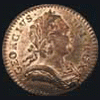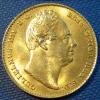Once you have been self employed, Mike, it's intensely frustrating to be in an environment where no-one has the courage to actually do anything! It served its purpose though - the extra few grand got us here - I am now sitting on a terrace on my fruit farm, sipping red wine from a 5 litre plastic bottle that one of the ridiculously friendly villagers gave us from his own vineyard, under a nearly full moon, living the kind of life most people fantasise about.
The coin business has suffered from neglect during the Catawiki months, and I shall thoroughly enjoy giving it the attention it deserves once more. It is the future, and Catawiki never was, really...tudo bem, it's all good
 Coinpublications.com
Coinpublications.com



